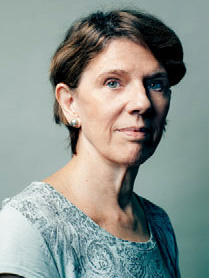Smith in My Life: Working Both Sides of My Brain
Alum News

Published December 6, 2017
I am a recently retired neuroimmunologist. I spent close to 40 years of my career looking for the cause of and cure for the neurologic disease multiple sclerosis.
 When I graduated from Smith with a major in biological sciences, very few of my classmates were headed directly to graduate school or medical school. It took me five years of working in a research lab after my Smith graduation to know that getting a Ph.D. would be the most rewarding choice of my life. Because of the support and encouragement from one of my Smith professors, B. Elizabeth Horner, I finally wound up in graduate school pursuing studies on the human immune response and what happens in autoimmune disease. Smith provided me with a mentor in Miss Horner, who helped me make an important life decision.
When I graduated from Smith with a major in biological sciences, very few of my classmates were headed directly to graduate school or medical school. It took me five years of working in a research lab after my Smith graduation to know that getting a Ph.D. would be the most rewarding choice of my life. Because of the support and encouragement from one of my Smith professors, B. Elizabeth Horner, I finally wound up in graduate school pursuing studies on the human immune response and what happens in autoimmune disease. Smith provided me with a mentor in Miss Horner, who helped me make an important life decision.
There are many asymmetries in life. The two sides of our brain perceive and process information separately and differently by attaching different associations to a single stimulus. The right hemisphere controls the holistic and creative power of problem solving and behavior. I think of it as a subway car making only a few stops as it runs on an express route to its destination. The right side of the brain is supposedly our artistic font. While it is the big-picture place, it is also where we remember details. The left hemisphere is the local subway, slower because it makes more stops to accommodate detailed input, analytic interpretation and verbal output. It is the place where we make predictions, anticipate the next word in a sentence, apply the logic linking ideas. Connecting the two brain hemispheres is the neural isthmus known as the corpus callosum. This is the bridge in the brain where the input from both hemispheres contributing to a final solution of a scientific problem or decision of any kind can be integrated. I feel that my Smith liberal arts education provided me with an emotional and intellectual bridge to solve scientific problems using both hemispheres of my brain.
I took many science courses at Smith. But every semester I chose some diversion, such as learning to fence, studying Greek theater, taking music appreciation classes with the infamous drop-the-needle tests and enjoying every moment in my Yeats-Joyce class with Professor Kenneth Connelly. It was from my experience in the arts courses that I recognized I had another side to me that needed to be exercised. Smith is where I learned to be both scientific in its strictest sense and creative in its most open sense. I learned that to think outside the box allowed me to design new experiments that audaciously opposed my original hypothesis. Because of this, sometimes I was rewarded by making an even more important discovery than I otherwise would have.
I spend more time now in my retirement enjoying using the right hemisphere more than the left. I dance Argentine tango. I take photographs, mainly of women whom I encounter in my travels around the world. I teach students at Smith, Native American youth on pueblos in the Southwest and young girls in Tanzania. And I thank Smith for an educational experience that shaped my life and my ability to be both a productive and creative scientist.
Jean Merrill ’69 is a scientist, educator and photographer. She is also co-author of the children’s book The Wild Life of Limericks From A to Z. Photograph by Adam Krause
This story appears in the Winter 2017-18 issue of the Smith Alumnae Quarterly.
Smith In Your Life
Have a story about how Smith has influenced your life? Send your 600-word essay to saq@smith.edu for consideration.
Illustration by Hanna Barczyk